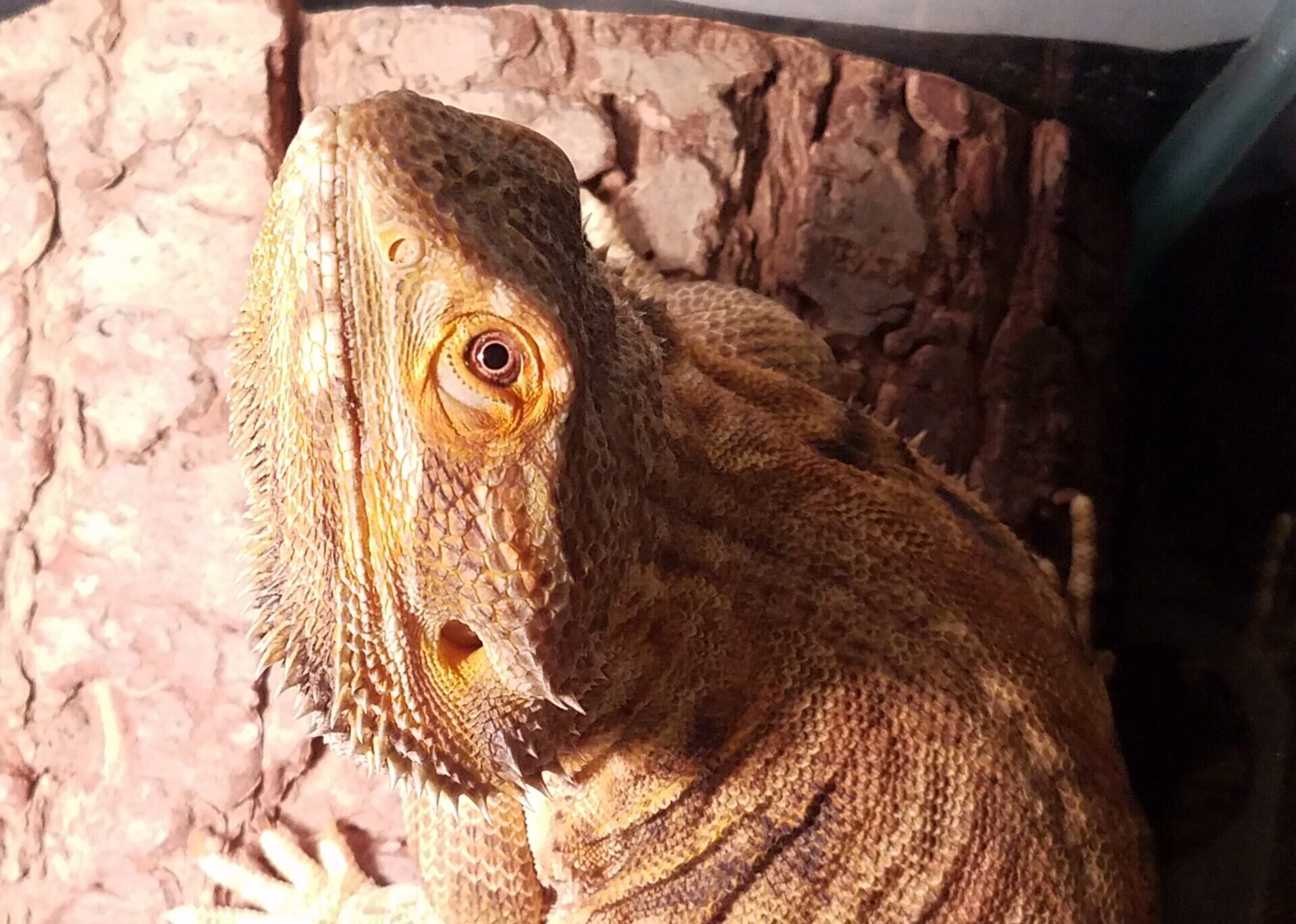Being native to Australia, Bearded Dragons are not used to other climates, especially the climate that goes with being an indoor pet! In order to make sure they have varying temperatures in their cage along with UV rays, it is essential to make sure that they have the proper lighting.
Bearded dragons are ectotherms (aka cold-blooded), which means they cannot regulate their body temperature on their own. More specifically, they are heliotherms, meaning that in order for them to raise their body temperature enough to function and digest food, they will sit out in the sun and bask. Then, when they get overheated, they move out of the sun to cool down.
So, your job is to make sure they can behave the same way within their enclosure. To do this, you need a basking spot with a heat lamp over it and the opposite side of the tank should be cooler (having a hide helps, as well). Make sure that the temperature range under the heat lamp is around 95-100 degrees F, and that they rest of the enclosure is around 70-78. The ambient temperature should NOT fall below 65 degrees F. Which means that during the winter, you will need to have the heat on in your house! The same goes for the summer season: having the overall tank temperature at a steamy 85-90 can overheat your dragons since they have nowhere to escape to cool themselves off. So, make sure the room the tank is in stays between 65-75ish degrees F.
You can opt to go with typical heat lamps that are sold specifically for reptiles, or you can just purchase regular flood lights around the same wattage and figure out if it’s able to get the temps on the basking spot to the right range. I switched to the latter after the former became a troublesome option (I found that the reptile brands were more expensive and broke more frequently, and all you really need is the heat output anyway). The wattage you will need will depend on the distance the bulb will be from the basking spot, how big your overall enclosure is, and the ambient temperature of the room.
Bearded Dragons get A LOT of sun running around the outback of Australia. The UV rays they absorb from the sun allow them to create more vitamin D3 inside their bodies, a vitamin that helps them absorb calcium. Since calcium is vital to a dragon’s well-being, we must make sure to mimic the sunlight, as well. This is achieved through a UVB bulb. This, like the heat lamp, should cycle through 12 hour light and 12 hour dark periods. It will also help the dragon create a steady sleep cycle.
Speaking of sleep cycles, make sure that the room that you have your bearded dragon in is actually dark during the night, or else your beardie may not be able to sleep, or will do so irregularly.
If you’re looking for an all-in-one solution, another option are Mercury Vapor Bulbs (MVBs). As implied, these bulbs can be used as a source of heat and UVB. They tend to be pricier than regular heat bulbs (duh) but, per customer reviews (and my own experience with them), they do seem to last much longer. It’s extremely frustrating to have heat bulb after heat bulb break on you, so this may actually save you money in the long run. Just make sure (as with any UVB and/or heat bulb) to use the lamp at the correct distance from the animal’s basking spot in the enclosure. Usually the company that sells the bulb will have some sort of guideline on the distance it should be from your animal for optimal use.
Always make sure to replace any UVB bulbs after about 12 months, as they do lose their efficiency. This will make sure that they are always getting enough UVB rays to avoid illnesses such as MBD!


